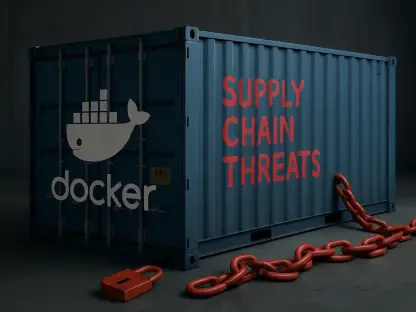The Disaster Data Recovery Market has grown significantly as the dependency on digital data has permeated every aspect of business operation and growth. By the year 2031, this market is expected to have evolved dramatically, influenced by several factors including technological advancements, the occurrence of natural and man-made disasters, and the increasing sophistication of cyber threats. This article will dissect these factors and provide insights into the future development of the disaster data recovery landscape.
The Urgency for Disaster Recovery Solutions
In an era where data is synonymous with currency, its sudden loss can debilitate an organization’s operational integrity and financial stability. The Disaster Data Recovery Market has emerged as the bulwark against such unforeseen events, providing solutions that ensure business continuity. Events ranging from catastrophic natural disasters like earthquakes and floods to rampant cyber threats such as ransomware and phishing attacks highlight the escalating risks businesses face. This has spurred the urgency to implement resilient disaster recovery systems capable of mitigating these risks.The reliance on digital information has spurred an operational paradigm where data loss is not just inconvenient but potentially disastrous. Whether from hardware malfunctions, software corruption, human error, or malicious activities, the consequences can be severe. In response, companies are increasingly adopting disaster recovery solutions that offer rapid restoration of data, minimizing downtime and preserving business reputation.
Technological Advancements Driving Disaster Recovery
Technological progression has been the cornerstone of disaster recovery advancement. Innovations such as cloud computing have revolutionized how data is managed, secured, and recovered, with Disaster Recovery as a Service (DRaaS) emerging as a pivotal solution. DRaaS affords entities of all sizes the ability to quickly rebound from disruptions with minimal investment in physical infrastructure, offering scalable and flexible data recovery options that are cost-effective and reliable.The shift toward cloud-based solutions also facilitates improved accessibility for disaster recovery services. Companies no longer need to maintain expensive, dedicated disaster recovery sites. Instead, they can leverage cloud technology to create virtual backups of critical systems that can be activated on demand, reducing the time and cost associated with traditional recovery methods, and enabling businesses to be more agile in the face of disaster.
Market Growth Drivers and Constraints
As we look towards 2031, the Disaster Data Recovery Market is poised for significant growth, driven by an increasing awareness of the importance of data protection and the expanding volume of data generated by businesses. Enhanced regulations and compliance standards are also propelling the market forward, necessitating robust disaster recovery frameworks to protect sensitive information and ensure legal compliance.However, this growth is not without its constraints. The high cost of implementing comprehensive disaster recovery plans can be a barrier for some organizations, especially smaller businesses with limited resources. Furthermore, the ever-evolving nature of cyber threats requires continuous investment in the latest technologies to safeguard against new types of attacks, introducing additional financial and operational pressures for companies aiming to stay ahead of potential disruptions.
Regional Expansion of Disaster Recovery Solutions
The horizon of disaster recovery solutions is witnessing substantial expansion, with regions such as APAC, South America, and MEA embracing these systems at an accelerated pace. Infrastructural developments and digitization initiatives in these regions contribute towards an elevated emphasis on data integrity. As the technological landscape in these areas matures, a receptive environment for the adoption of sophisticated disaster recovery solutions is emerging, supporting market growth outside traditional strongholds.In particular, APAC, with its dynamic economic landscape, is emerging as a significant market for disaster recovery services. The region is experiencing considerable advancements in IT infrastructure and a growing recognition of the importance of data protection among businesses, driving the adoption of disaster recovery solutions. Enhanced connectivity and technological integration aid in this region’s readiness to handle the complexities of data recovery and business continuity planning.
Competitive Landscape and Key Market Players
The landscape of the Disaster Data Recovery Market is both competitive and collaborative, with key players like MSS IT, Arcserve, Carbonite Inc., and Code42 Software Inc. steering the industry through innovation and strategic partnerships. These companies are not only vying for market share but also working together to define industry standards and best practices, ensuring a progressive trajectory for the market as a whole.The competition among market players is fostering innovation, with each organization striving to offer unique solutions that cater to the diverse needs of their clients. This has resulted in an array of services and tools that can be tailored to specific recovery requirements of different businesses, promoting a culture of adaptive and proactive disaster recovery planning.
The Move Toward Comprehensive Disaster Strategies
The adoption of comprehensive disaster strategies over mere data restoration efforts represents one of the most significant shifts in the market. By 2031, it is anticipated that businesses will place equal emphasis on preventative measures as on reactionary recovery practices. The advancement of disaster recovery is encapsulated in the broader concept of business continuity, with organizations seeking holistic approaches to mitigate risks across all operational areas.This move is catalyzed by the understanding that the spectrum of potential disruptions extends beyond traditional disasters. Businesses are now recognizing the necessity for strategies that encompass not just IT infrastructure, but also critical business operations, supply chain management, and employee safety. These comprehensive strategies ensure that an organization can sustain core functions and rapidly recover in the aftermath of a disaster.
Cybersecurity’s Role in Data Recovery
As data recovery strategies evolve, so too does the symbiotic relationship with cybersecurity. The increasing prevalence of cyber threats demands that modern disaster recovery plans integrate robust cybersecurity measures to prevent data breaches and other malicious activities. Cybersecurity is no longer just a siloed IT concern, but a central component of any disaster recovery solution.Implementing advanced security protocols, conducting regular risk assessments, and ensuring employee awareness of cyber threats are fundamental practices that support the resilience of disaster recovery systems. The future promises an even tighter integration between data recovery and cybersecurity, with the latter becoming an innate feature of the former, ensuring the protection of data assets from an ever-widening range of vulnerabilities.
The Future Landscape of the Disaster Data Recovery Market
The Disaster Data Recovery Market is on the rise, reflecting our increased reliance on digital data for business operations. By 2031, this sector is anticipated to undergo significant transformation, spurred by numerous factors. Technological progress stands at the forefront, enabling more robust data protection and recovery solutions. The prevalence of natural and man-made disasters contributes to the urgency for these services, as businesses must be prepared for any unexpected data loss. Moreover, the threat landscape is growing ever more complex due to sophisticated cyber-attacks, driving the demand for disaster recovery solutions that can respond to evolving security challenges. As we approach 2031, the Disaster Data Recovery Market will likely see an expansion in services and technologies designed to safeguard and restore critical business data in the face of any disaster scenario.









